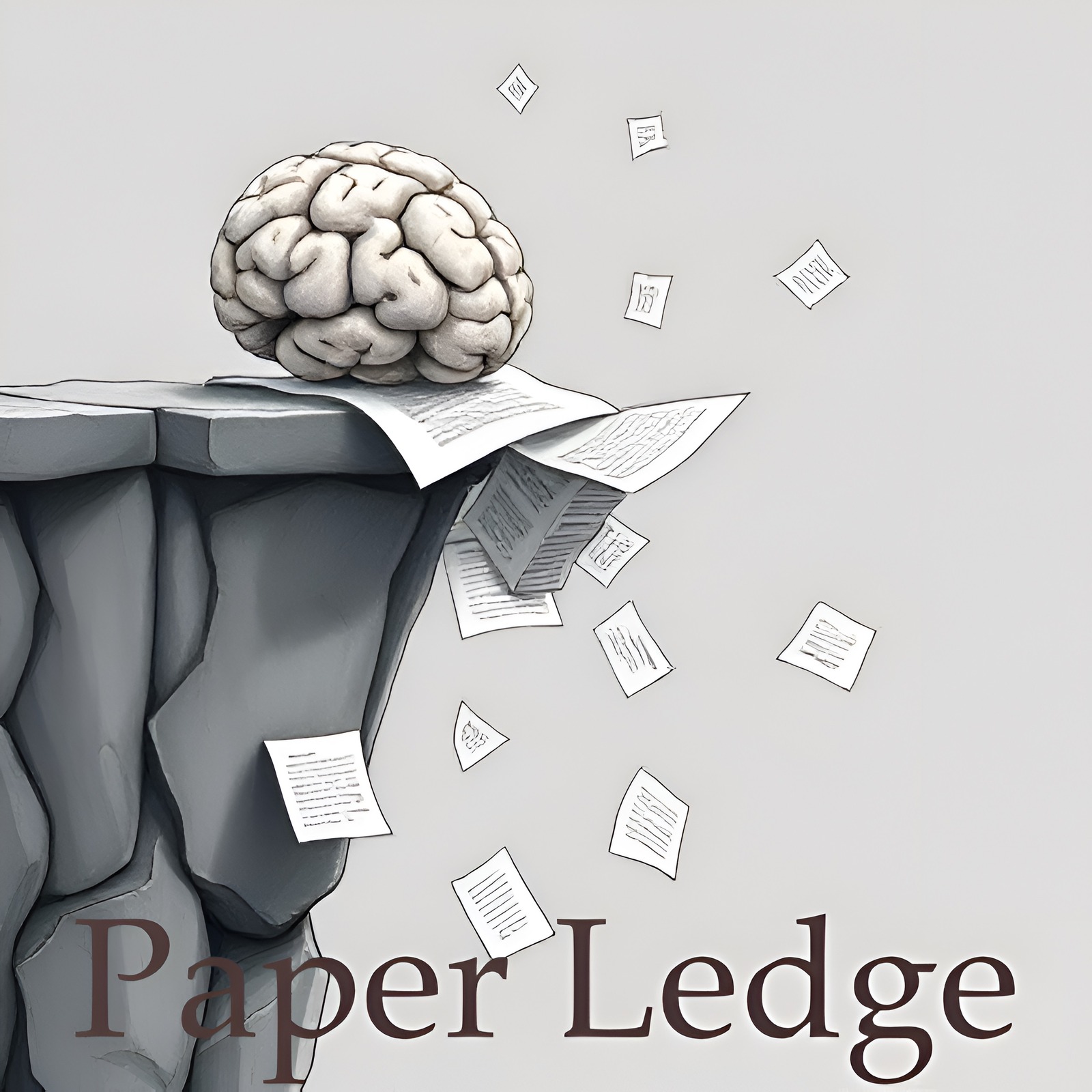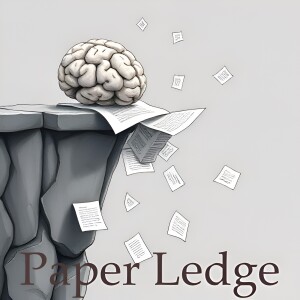PaperLedge

PaperLedge where research meets storytelling is a revolutionary podcast where cutting-edge research meets AI-powered storytelling. Hosted by the Ernis, whose blend of gentle reassurance, cosmic wonder, explanatory clarity, and enthusiastic charm makes complex research accessible to everyone. Each episode, Ernis transforms the latest academic papers into engaging, jargon-free audio experiences that deliver key insights in digestible formats. Whether you’re a researcher seeking interdisciplinary perspectives, a student supplementing your studies, or simply curious about scientific breakthroughs, PaperLedge has something for you.
Episodes
Episodes



Tuesday Jun 17, 2025
Tuesday Jun 17, 2025
Hey PaperLedge learning crew, Ernis here, ready to dive into some fascinating research! Today, we're tackling a paper that helps us understand how well those amazing AI image generators, like the ones that create pictures from text, are really working.
Think of it like this: you're baking a cake, and the recipe says to bake it until it's "done." But how do you know when it's really done? Is it when the timer goes off, or when a toothpick comes out clean? The authors of this paper are trying to give us a better "toothpick test" for AI image generators, specifically diffusion models.
Diffusion models are a type of AI that learns to generate images by gradually adding noise to a real image until it becomes pure static, and then learning to reverse that process, going from noise back to a clear image. It's like watching a picture slowly dissolve into snow on a TV screen, and then figuring out how to rewind and sharpen it back up.
Now, here’s the problem: these models have a "loss" value, which is supposed to tell us how well they're learning. But unlike other AI models, the lowest possible loss value for diffusion models isn't zero. It's some mystery number! So, we don't know if a high loss means the model is bad, or just that it's reached its limit. It's like baking that cake and not knowing if the oven temperature is off, or if the recipe just isn't very good.
This paper tackles this head-on. The researchers came up with a clever way to estimate what that "ideal loss" value should be. They even figured out how to do it without needing a ton of computing power, which is awesome.
So, what did they find?
First, they can now accurately diagnose how well these models are training. This is huge! It means we can fine-tune the training process to get even better results.
Second, they figured out a better training schedule. Think of it as a new baking recipe that's guaranteed to give you a fluffier cake!
Third, they looked at something called "scaling laws." These laws describe how much better AI models get as you make them bigger. The researchers found that after subtracting their "ideal loss" value, these scaling laws become much clearer. It's like finally seeing the true potential of those giant AI models!
Why does this matter?
For AI researchers: This gives them a more accurate way to evaluate and improve diffusion models, which could lead to even more realistic and creative AI-generated images.
For artists and designers: Better AI image generators mean more powerful tools for creating art and design.
For everyone: It helps us understand the fundamental limits and potential of AI, which is important as AI becomes more and more integrated into our lives.
In short, this paper provides a crucial tool for understanding and improving diffusion models, opening the door to even more incredible AI-generated images.
Here are a couple of questions that popped into my head:
Could this "ideal loss" estimation technique be applied to other types of AI models besides diffusion models?
How will these improved training schedules impact the computational resources needed to train state-of-the-art diffusion models? Will they become more efficient?
Alright learning crew, that’s all for this paper! Let me know what you think, and keep on learning!Credit to Paper authors: Yixian Xu, Shengjie Luo, Liwei Wang, Di He, Chang Liu



Monday Jun 16, 2025
Monday Jun 16, 2025
Hey PaperLedge crew, Ernis here! Get ready to dive into some brain-tickling research that helps computers understand our questions when we're asking about databases. Think of it like this: you're asking a super-smart computer to find information, but instead of typing code, you're just using plain English. The magic behind understanding your request? It's called schema linking.
Now, imagine a librarian who knows every book and author in the library. Schema linking is like that librarian for databases. It helps the computer figure out which tables (like book categories) and columns (like author names) are relevant to your question. It's a crucial step in something called "Text-to-SQL," which is basically translating your everyday questions into the computer language (SQL) needed to pull the right info from the database.
So, what's the problem? Well, the current way these "librarians" are trained is a bit like rote memorization. They're really good at remembering the exact right answer, but not so great at figuring things out when the question is a little different or tricky. It's like they've memorized the location of every book instead of understanding how the library is organized. The paper highlights this as a rote-learning paradigm that "compromises reasoning ability."
"Current fine-tuning approaches...employ a rote-learning paradigm, excessively optimizing for ground truth schema linking outcomes while compromising reasoning ability."
The researchers found that it's hard to teach the computer to reason because it's difficult to find good examples for it to learn from. Imagine trying to teach someone chess by only showing them winning moves – they'd never learn strategy!
That's where this paper comes in! They've developed a new method called Schema-R1, which is all about teaching the computer to think instead of just memorize. The key is using reinforcement learning, which is like training a dog with rewards. The computer gets rewarded for making smart choices in linking up the question to the right database parts.
Here’s how it works in three steps:
First, they carefully create small groups of good examples that highlight the reasoning process. Think of it as teaching the computer the basic rules of the database library.
Next, they give the computer a head start with some basic memorization, so it's not starting from scratch. This is called supervised fine-tuning for cold-start initialization.
Finally, they use reinforcement learning, guided by some pre-defined rules, to help the computer learn how to make the best decisions on its own. This is where the computer starts to develop its own "database librarian" instincts.
The results? Pretty impressive! The researchers found that Schema-R1 significantly improved the computer's ability to correctly filter information, boosting accuracy by 10% compared to previous methods.
So, why does this matter? Well, imagine:
For developers, this means building more reliable and user-friendly applications that can access data more efficiently.
For businesses, it means being able to ask questions about their data in plain English and get accurate answers faster, leading to better decision-making.
And for everyone else, it means easier access to information and a more intuitive way to interact with complex databases.
This research is a step towards making technology more accessible and empowering us to get the information we need, without needing to be coding whizzes!
Now, thinking about this research, a couple of questions popped into my head:
How might this technology change the way we teach database management and SQL to new programmers? Could it make it easier to learn by focusing on the why instead of just the how?
What are the ethical implications of making data access so easy? Could it lead to misuse or privacy concerns if not implemented carefully?
Let me know what you think in the comments, PaperLedge crew! Until next time, keep those neurons firing!Credit to Paper authors: Wuzhenghong Wen, Su Pan, yuwei Sun



Monday Jun 16, 2025
Monday Jun 16, 2025
Hey PaperLedge crew, Ernis here, ready to dive into another fascinating piece of research! Today, we're tackling a paper that's all about making big calculations way, way faster. Imagine trying to solve a massive jigsaw puzzle with millions of pieces. That's kind of like what these researchers are dealing with, but instead of puzzle pieces, it's complex mathematical operations.
The core problem they're addressing is how to efficiently handle integral operations. Now, that might sound intimidating, but think of it like this: imagine you want to calculate the total area of a map with lots of irregular shapes. Integrals help you do that precisely, but with enormous datasets, the calculations can take forever!
So, what's their solution? They've developed a clever framework that automatically uncovers hidden patterns, or geometries, within the data. It's like finding secret shortcuts in that giant jigsaw puzzle. Instead of looking at each piece individually, they find groups of pieces that fit together easily. They do this using an iterative process, meaning they refine their approach step-by-step to find the best patterns.
Think of it like organizing your closet. You might start by grouping shirts and pants, but then you realize you can further group them by color, then by season. Each level of organization reveals a new layer of understanding. That's similar to how their system works, building a hierarchical partition tree that reveals organization at different scales.
Now, here's where it gets really cool. Using this discovered "geometry," they employ two powerful techniques:
First, the butterfly algorithm. Imagine a butterfly's wings, each side mirroring the other. This algorithm exploits the low-rank structure they found. Think of it as finding redundant information. Instead of storing everything, they only store the essential bits, drastically reducing the memory needed.
Second, adaptive best tilings. Remember those tile puzzles where you have to fit different shapes together? This is similar! They intelligently "tile" the data in both space and frequency domains using something called a Haar-Walsh wavelet packet tree. It's like finding the perfect arrangement of tiles to represent the data most efficiently.
The beauty of this approach is that it's data-driven. It doesn't rely on pre-existing knowledge about the data's structure. It figures it out on its own! This is super useful when dealing with complex datasets where the underlying patterns are irregular or completely unknown.
They tested their method on two challenging types of problems:
Matrices related to acoustic heterogeneous potential operators. Imagine simulating how sound travels through different materials, like air, water, and rock.
Families of orthogonal polynomials. These are special mathematical functions that pop up in many scientific fields.
And the results? They were able to compress the data, reducing storage complexity from something proportional to N-squared (O(N2)) down to something proportional to N log N (O(N log N)). That's a HUGE improvement! It's like going from needing a giant warehouse to store your files to being able to fit them on a USB drive. This allows for fast computation and scalable implementation.
"Unlike classical approaches that rely on prior knowledge of the underlying geometry, our method is fully data-driven..."
So, why does this matter? Well, for scientists and engineers, this means they can tackle simulations and calculations that were previously impossible due to computational limitations. Think faster weather forecasting, improved medical imaging, or more accurate simulations of material properties.
But even if you're not a scientist, this research impacts you. Faster and more efficient computation leads to advancements in all sorts of technologies we use every day, from the algorithms that power search engines to the AI that drives self-driving cars.
Here are a few questions that popped into my head while reading this:
Could this approach be applied to other types of data, like image or video processing, to improve compression and analysis?
What are the limitations of this method? Are there certain types of datasets where it doesn't perform as well?
How might this research influence the development of new machine learning algorithms?
Alright, that's the paper for today! I hope you found that as fascinating as I did. Until next time, keep exploring the PaperLedge, and stay curious!Credit to Paper authors: Pei-Chun Su, Ronald R. Coifman



Monday Jun 16, 2025
Computer Vision - VGR Visual Grounded Reasoning
Monday Jun 16, 2025
Monday Jun 16, 2025
Hey PaperLedge crew, Ernis here, ready to dive into some seriously cool research! Today, we're tackling a paper that's all about making AI better at seeing and understanding the world around it, not just reading about it.
So, you know how some AI can solve math problems or answer science questions by thinking step-by-step? That's called "chain-of-thought" reasoning. But most of these AI brains are stuck in a purely language-based world. Think of it like trying to describe a painting only using words – you're bound to miss a lot of the detail, right?
This paper says, "Enough of that!" It introduces a new kind of AI called VGR, which stands for something fancy, but think of it as "Visual Grounded Reasoner." The cool thing about VGR is that it's specifically designed to really see the important details in images before it starts thinking.
Imagine you're trying to find your keys in a messy room. Do you just scan the whole room at once? No! You probably focus on specific areas, like the table, the couch, maybe under a pile of clothes (we've all been there!). VGR does something similar. It first detects the relevant parts of the image – those areas that are most likely to help it answer the question.
Here's where it gets really neat. Instead of just vaguely "knowing" those areas are important, VGR actually "zooms in" and replays those specific image regions to itself. It's like taking a closer look at those areas where you think your keys might be. This helps VGR get a much more detailed understanding of what's going on in the picture.
To make VGR this good, the researchers created a massive training dataset called VGR-SFT. This dataset is like a schoolbook filled with examples of how to reason about images, combining both visual clues and language deduction. It teaches the AI to connect what it sees with what it knows.
Now, the researchers put VGR to the test using a LLaVA-NeXT-7B model as a baseline. This model is already pretty smart, but VGR blew it out of the water on tasks that require really detailed image understanding. For example, on a benchmark called ChartQA (which tests how well an AI can understand charts), VGR improved the score by almost 13 points! And the best part? It did it using only 30% of the image information compared to the baseline. Talk about efficiency!
Why does this matter?
For AI Researchers: This shows a promising new direction for building AI that can truly understand the world like we do, not just read about it.
For Educators: Imagine AI that can help students understand complex diagrams or analyze visual data in a much more intuitive way.
For Everyone: This could lead to better image search, more accurate medical diagnoses from X-rays, and even more helpful assistive technologies for people with visual impairments.
Here are a couple of questions that popped into my head:
Could this approach be used to help AI understand video as well as still images? Imagine AI that could understand the nuances of human interaction from video footage!
What are the potential ethical concerns of having AI that can so precisely analyze images? How do we ensure this technology is used responsibly?
What do you guys think? Let me know your thoughts in the comments below!Credit to Paper authors: Jiacong Wang, Zijiang Kang, Haochen Wang, Haiyong Jiang, Jiawen Li, Bohong Wu, Ya Wang, Jiao Ran, Xiao Liang, Chao Feng, Jun Xiao



Monday Jun 16, 2025
Monday Jun 16, 2025
Hey PaperLedge crew, Ernis here, ready to dive into something really mind-bending today! We're talking about the future of the internet, but not just cat videos and online shopping. Imagine an internet populated by millions, maybe billions, of AI agents – little software robots doing everything from managing your smart home to optimizing global supply chains. Sounds cool, right? But there's a catch...
This paper asks a crucial question: Can the current internet handle this AI agent invasion? Think of it like this: our existing internet infrastructure is like a cozy small town designed for a few thousand residents. Now, suddenly, a million people move in, all needing immediate services. The existing roads, water pipes, and electricity grids are going to be seriously strained.
These AI agents aren't like your average website. They’re not just sitting there waiting for you to click a button. They're autonomous, meaning they make their own decisions. They can initiate actions, remember past interactions (persistent state), create even more agents (spawn sub-agents), and even negotiate with each other. This creates a whole new set of demands on the internet.
The paper highlights a few critical bottlenecks:
Speed: Right now, updating website addresses (using the Domain Name System or DNS) can take 24-48 hours. AI agents need updates in milliseconds! That's like waiting two days for Google Maps to reroute you when you miss a turn – totally unacceptable.
Security: Imagine needing to revoke a security certificate (like a digital ID) for trillions of these agents instantly. Our current system just isn't built for that scale.
Addressing: The way we currently address devices on the internet (IPv4 and IPv6) simply isn't designed to handle the sheer number of AI agents we're talking about. It's like trying to fit all the world's population into a single apartment building.
So, what's the solution? The researchers looked at three main options:
Upgrading the existing system: Think of this as adding extra lanes to the highway and upgrading the power grid. It's easier and faster to implement, but might not be enough in the long run.
Switching to a completely new system: This is like building a brand-new city from scratch, designed specifically for the needs of these AI agents. It offers better performance but takes much longer to build and get everyone to move in.
A hybrid approach: This is a mix of both – upgrading some parts of the existing infrastructure while building new, specialized systems for critical applications.
"Drawing parallels to dialup-to-broadband transitions, we find that agent requirements constitute qualitative, and not incremental, changes."
The researchers argue that the changes needed for AI agents are qualitative, not just incremental. It's not just about making things a little faster; it's about fundamentally changing how the internet works. They conclude that a hybrid approach is most likely to emerge, with some centralized registries for critical agents and more decentralized systems for specific tasks.
So, why does this research matter? Well:
For developers: This is about understanding the limitations of current infrastructure and designing AI agents that can work within those constraints or help push for better solutions.
For policymakers: This is about preparing for the future and making informed decisions about infrastructure investments and regulations.
For everyone: This is about understanding the potential impact of AI on our lives and ensuring that the internet remains a reliable and secure platform for everyone.
Here are a few things that popped into my head while reading this paper:
If we move to a hybrid approach, how do we ensure interoperability between the old and new systems?
Who gets to decide which AI agents are "critical" and therefore get access to the centralized registries?
Could a completely new, purpose-built internet for AI agents eventually replace the current internet altogether?
Let me know your thoughts, learning crew! This is a brave new world, and we're all figuring it out together. Until next time!Credit to Paper authors: Ramesh Raskar, Pradyumna Chari, Jared James Grogan, Mahesh Lambe, Robert Lincourt, Raghu Bala, Abhishek Singh, Ayush Chopra, Rajesh Ranjan, Shailja Gupta, Dimitris Stripelis, Maria Gorskikh, Sichao Wang



Monday Jun 16, 2025
Databases - The Case for Learned Index Structures
Monday Jun 16, 2025
Monday Jun 16, 2025
Alright learning crew, Ernis here, ready to dive into some seriously cool research that could change how we think about databases! Today, we're talking about "Learned Indexes," and trust me, it's way less intimidating than it sounds.
Imagine you have a massive phone book. To find a name, you don't read every single entry, right? You use the alphabetical order – the index – to quickly jump to the right section. Now, what if that index could be even smarter?
That's the core idea behind this paper. The researchers start with a clever observation: traditional indexes, like the ones used in databases, are actually just… models! Think of it this way:
A B-Tree index (the standard workhorse) is like a map that guides you to the location of information based on its sorted order.
A Hash index is like a special address system that instantly pinpoints a record’s location even if things are jumbled.
A Bitmap index is like a checklist, instantly telling you whether a specific piece of data exists.
The researchers suggest: what if we could replace these traditional "models" with something even more powerful… like deep learning? They call these newfangled data structures "Learned Indexes."
Instead of relying on pre-programmed rules, a learned index uses a neural network to learn the patterns in your data. It figures out how the data is organized and uses that knowledge to predict where to find the information you're looking for. It's like teaching a computer to understand your data so well that it can find anything almost instantly!
The key idea is that a model can learn the sort order or structure of lookup keys and use this signal to effectively predict the position or existence of records.
Now, why is this a big deal? Well, the researchers crunched some numbers and found that learned indexes can be significantly faster and more memory-efficient than traditional indexes, especially on real-world datasets. They achieved up to a 70% speed increase while using a fraction of the memory compared to highly optimized B-Trees!
Think about this in terms of searching for a song in your massive music library. Instead of relying on the standard index, a learned index could "understand" your music collection – maybe it recognizes patterns in song titles, artists, or even genres – and use that knowledge to find your song lightning fast.
But it's not all sunshine and rainbows. There are challenges, of course. Designing these learned indexes is tricky, and we need to figure out when they'll truly shine and when traditional indexes are still the better choice. It's all about figuring out the trade-offs and finding the right tool for the job.
So, why should you care? Well:
For the techies: This could revolutionize database design, leading to faster, more efficient systems.
For the business folks: Faster data access means quicker insights, better decision-making, and ultimately, a competitive edge.
For everyone: This research highlights the incredible potential of AI to improve everyday technologies we rely on.
More importantly though, we believe that the idea of replacing core components of a data management system through learned models has far reaching implications for future systems designs and that this work just provides a glimpse of what might be possible.
This paper is just the beginning. The researchers believe this is a glimpse into the future of data management. It raises some fascinating questions:
Could we use similar learning techniques to optimize other parts of a database system?
How do we ensure these learned indexes are fair and unbiased, especially when dealing with sensitive data?
What new hardware and software architectures will be needed to fully unlock the potential of learned indexes?
It's a brave new world of data management, my friends, and I'm excited to see where this research takes us!Credit to Paper authors: Tim Kraska, Alex Beutel, Ed H. Chi, Jeffrey Dean, Neoklis Polyzotis



Monday Jun 16, 2025
Machine Learning - One Model To Learn Them All
Monday Jun 16, 2025
Monday Jun 16, 2025
Hey PaperLedge crew, Ernis here, ready to dive into some seriously cool research! Today, we're tackling a paper about building one AI to rule them all… or at least, to do a whole bunch of different things really, really well.
We all know AI is amazing, right? It can translate languages, recognize cats in pictures, even understand what you're saying to your smart speaker. But usually, you need a completely different AI model for each of these tasks. Think of it like having a separate specialized tool for every tiny job around the house. A hammer for nails, a screwdriver for screws, a pasta fork for pasta…
Now, imagine if you could build one super-tool that could handle most of those jobs, maybe not perfectly, but pretty darn well. That’s what these researchers were aiming for! They wanted to create a single, unified AI model that could handle tasks as diverse as:
Image recognition (like identifying objects in pictures)
Machine translation (translating between languages)
Image captioning (describing what’s happening in a photo)
Speech recognition (understanding spoken language)
And even parsing English sentences (breaking down the grammar and structure)
That's quite a to-do list!
So, how did they do it? Well, they created an AI model that's kind of like a Frankenstein's monster, but in a good way! They took the best parts from different AI "brains" and stitched them together. Think of it like this: they used convolutional layers (great for image stuff), attention mechanisms (good for focusing on the important parts of a sentence or image), and sparsely-gated layers (which helps the AI decide what to focus on). It's a bit technical, but the key takeaway is they combined different building blocks that are usually used in isolation.
And here's the really cool part: they trained this single model on all those different tasks at the same time. It's like teaching a student multiple subjects concurrently – math, history, and English all at once.
"Interestingly, even if a block is not crucial for a task, we observe that adding it never hurts performance and in most cases improves it on all tasks."
The results? Pretty impressive! They found that this single model could perform surprisingly well on all the tasks. And even better, they discovered that when they trained it on multiple tasks together, the tasks with less data actually got a big boost in performance. It's like the smaller, less resourced project benefiting from the brain power of the larger projects. However, it is important to note that the bigger tasks didn't suffer much, if at all, from being trained alongside the smaller ones.
Think of it like this: a small language spoken by only a few thousand people could see a massive improvement in machine translation quality by being trained alongside English and Spanish. Because the model is better able to recognize the underlying structure of language!
Why does this matter? Well, for starters, it could make AI development much more efficient. Instead of building a separate model for every single task, we could potentially train one model to handle many different things. This could be a game changer for smaller companies or research groups that don't have the resources to train massive, specialized AI models.
But also, this research hints at something deeper: that there might be some underlying principles that are common across all these different tasks. By training a single model on multiple tasks, we might be able to unlock a more general form of intelligence.
So, here are a couple of things that are buzzing around in my brain after reading this paper:
If we can create a single model that can handle so many different tasks, what are the limits? Could we eventually create a single AI that can do anything a human can do?
What are the ethical implications of building such a powerful AI? How do we make sure it's used for good and not for harm?
What do you all think? Let me know your thoughts in the comments. Until next time, keep learning!Credit to Paper authors: Lukasz Kaiser, Aidan N. Gomez, Noam Shazeer, Ashish Vaswani, Niki Parmar, Llion Jones, Jakob Uszkoreit



Monday Jun 16, 2025
Monday Jun 16, 2025
Hey PaperLedge crew, Ernis here, ready to dive into some fascinating research! Today we're tackling a paper that's all about how those super-smart AI language models, like the ones powering your favorite chatbots, actually think.
Now, usually, when we test these AI brains, we just look at the final answer they give. Did they get it right or wrong? But this paper argues that's not enough. It's like grading a student solely on their final exam, without looking at their notes, drafts, or how they studied. We need to peek inside the "black box" and see how they're reasoning to truly understand them and make them more reliable.
The researchers came up with a clever way to do this: strategic games! Think of chess, checkers, or even a simple board game. These games are perfect because they have clear rules, limited resources (like pieces or moves), and immediate feedback. The AI can't just guess; it has to plan, adapt, and make smart choices with what it has.
So, what exactly did they measure? Well, they focused on three key areas:
Planning: How well does the AI think ahead and strategize?
Revision: How effectively does it learn from its mistakes and adjust its strategy?
Resource-Constrained Decision Making: How smartly does it use its limited resources to achieve its goals? It's like trying to cook a gourmet meal with only a few ingredients in your pantry!
But how do you measure things like planning and revision? That's where the researchers got creative. They came up with metrics beyond just "win or lose." They looked at things like:
Overcorrection Risk Rate: How often does the AI make things worse by trying to fix something? Think of it like editing a photo so much that it ends up looking worse than the original!
Correction Success Rate: When the AI tries to fix something, how often does it actually improve the situation?
Improvement Slope: How quickly does the AI learn and get better over time?
Over-Budget Ratio: How often does the AI waste resources or go over budget in its decision-making?
The results were pretty interesting. They pitted 12 different AI models against each other in over 4,000 rounds of these strategic games. ChatGPT-o3-mini came out on top overall, winning about 75% of the time and showing a good balance of planning, revision, and resource management.
But here's where it gets really juicy: one model, Qwen-Plus, had a high "overcorrection risk rate," meaning it often made things worse by trying to fix them. Even though it was constantly tweaking its strategy, it only won about 25% of its matches, mainly because it was wasting resources. It's like a chef who keeps adding ingredients to a dish, hoping to improve it, but ends up ruining the flavor!
The researchers even found that models that edited their strategies more often didn't necessarily perform better. In fact, there was a negative correlation between overcorrecting and actually succeeding. This suggests that sometimes, the best strategy is to stick with your plan, even if it's not perfect.
So, why does all this matter? Well, for AI developers, this research provides valuable insights into how to build more reliable and efficient models. By understanding how AIs think and reason, we can create systems that are less prone to errors and better at making smart decisions.
For the rest of us, this research highlights the importance of looking beyond just the final answer. Whether it's an AI making a medical diagnosis or a chatbot writing a news article, we need to understand the process behind the decision to ensure it's accurate and trustworthy. It's a call to be more critical consumers of AI and to demand transparency in how these systems work.
This research really opens up some interesting questions, doesn't it?
Could we use these strategic games to teach AIs better decision-making skills, similar to how humans learn through playing games?
If a model is constantly overcorrecting, can we train it to be more confident in its initial plan, or to better assess when a revision is actually needed?
What does this mean for the long-term development and assessment of LLMs?
That's all for this episode of PaperLedge! Hope you enjoyed diving into the minds of these AI game players. Keep those learning gears turning, and I'll catch you next time!Credit to Paper authors: Xiaopeng Yuan, Xingjian Zhang, Ke Xu, Yifan Xu, Lijun Yu, Jindong Wang, Yushun Dong, Haohan Wang







